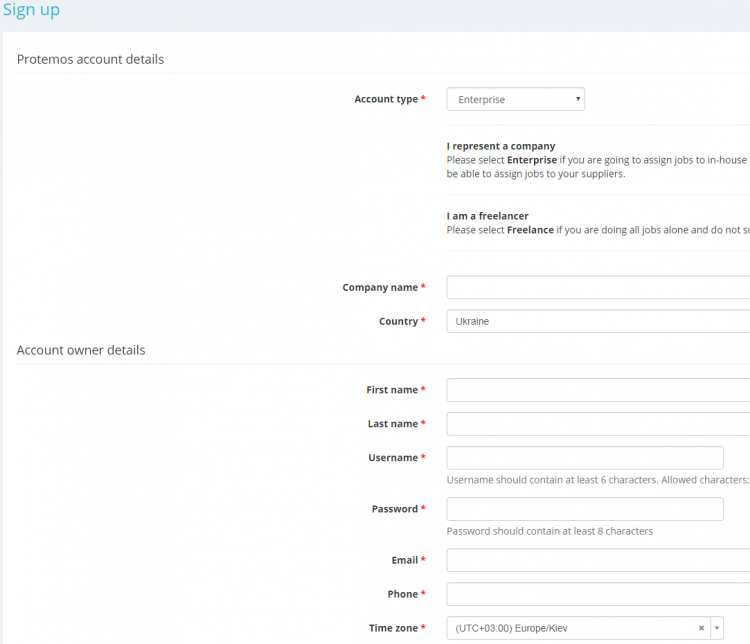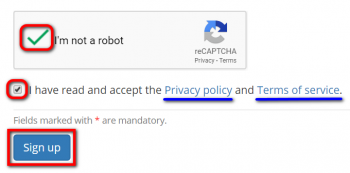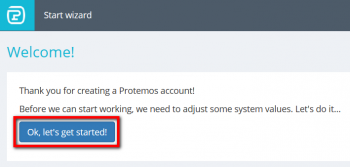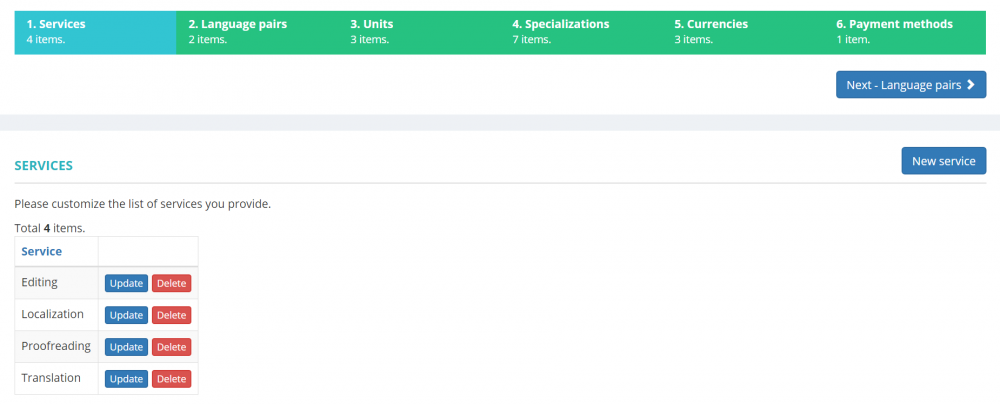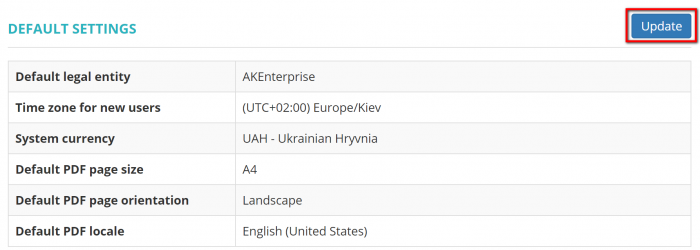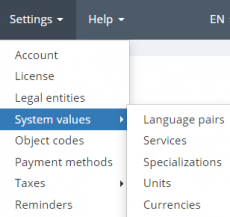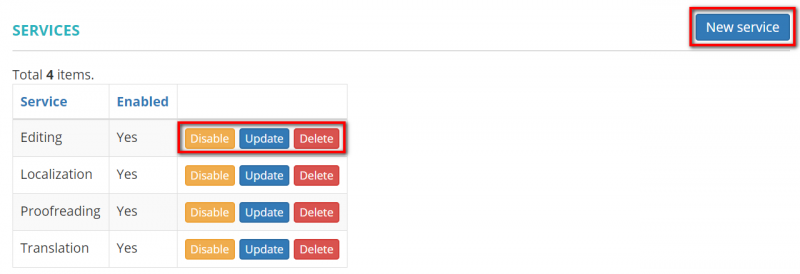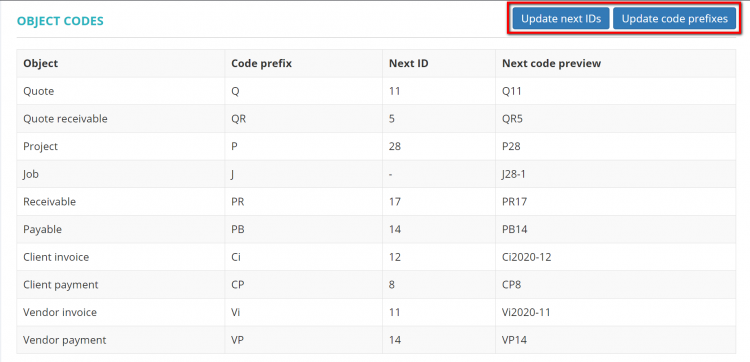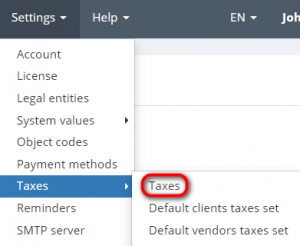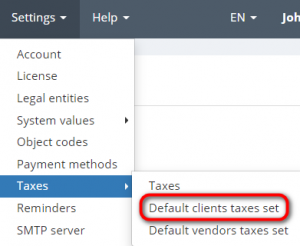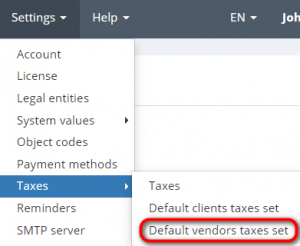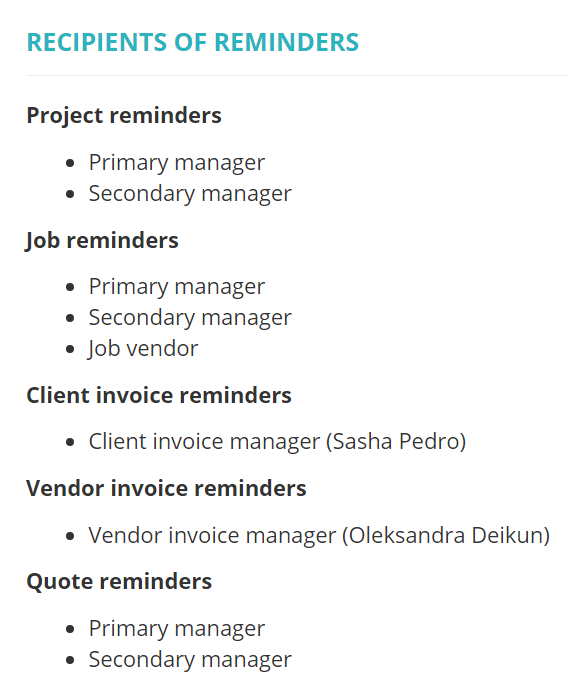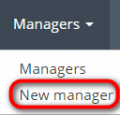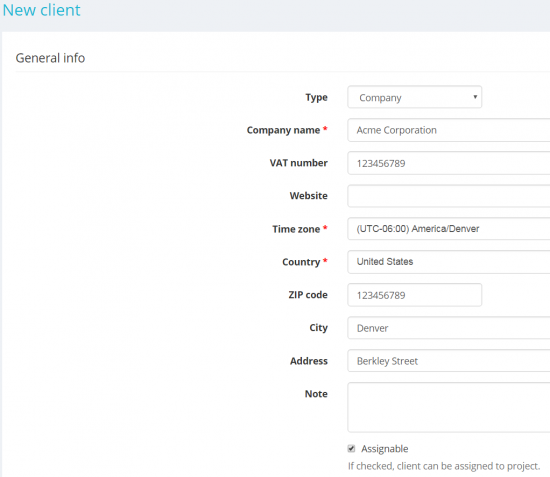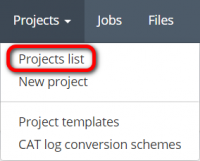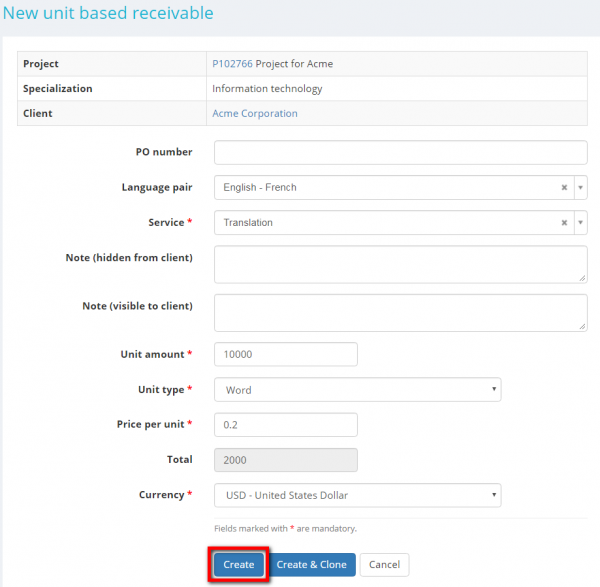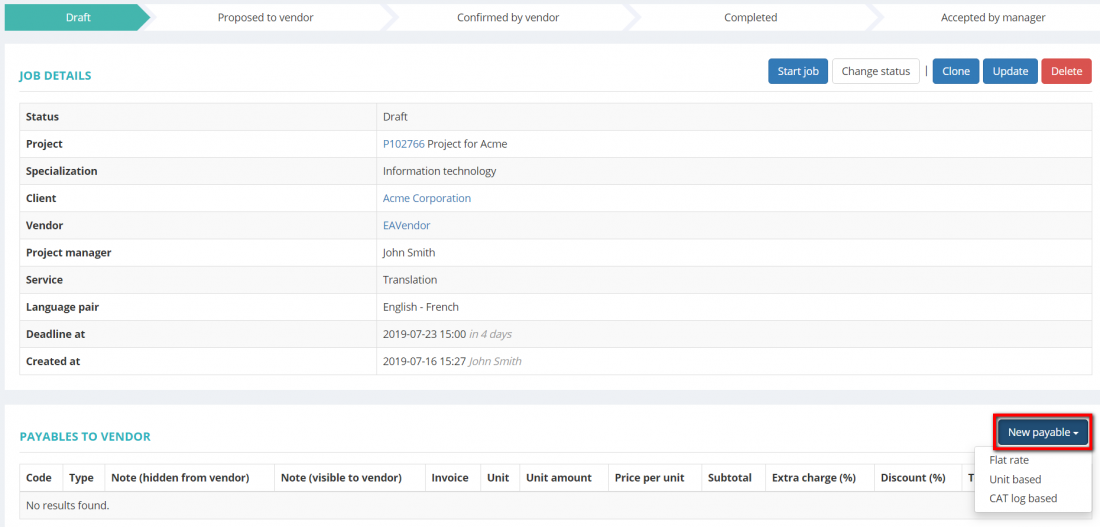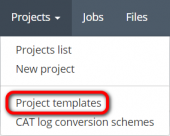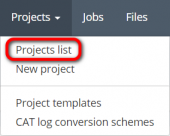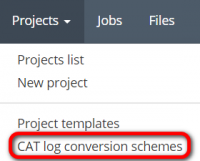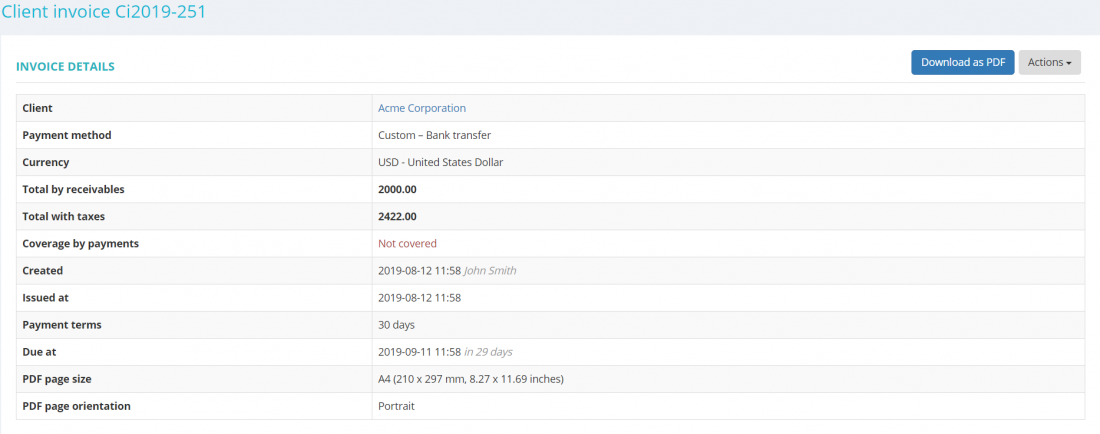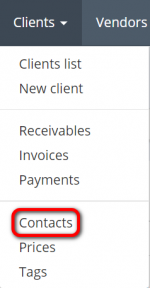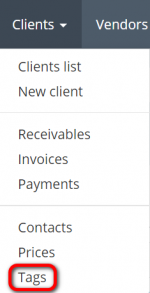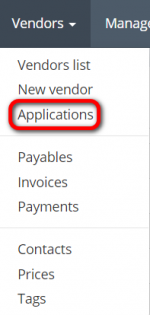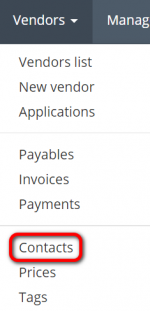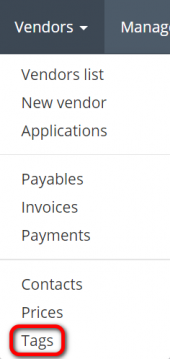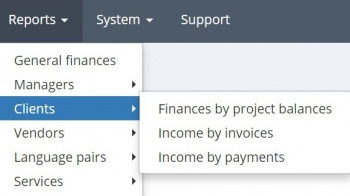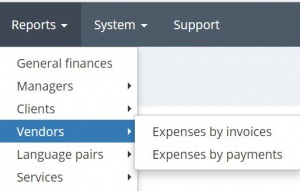Enterprise edition user manual
For a brief system overview, please check this video: 40px
Contents
- 1 Get started with Protemos
- 2 My profile settings
- 3 Settings
- 4 Add new manager
- 5 Add clients
- 6 Add vendors
- 7 Add new quote
- 8 Add new project
- 9 Projects=>Project templates
- 10 Projects=>CAT log conversion schemes
- 11 Create SmartCAT-related projects
- 12 Create invoices for clients and control their payment
- 13 Invoices from vendors and payment control
- 14 Clients=>Contacts
- 15 Clients=>Prices
- 16 Clients=>Tags
- 17 Vendors=>Applications
- 18 Vendors=>Contacts
- 19 Vendors=>Prices
- 20 Vendors=>Tags
- 21 Filters
- 22 Reports
- 23 Export data
- 24 Additional information
Get started with Protemos
To start working with Protemos, please create your account in the system by completing the following steps:
1. Press the "CREATE PROTEMOS ACCOUNT" button on the website www.protemos.com
2. It will bring you to the Create Account page:
3. Fill in all the boxes and tick the "I'm not a robot" checkbox.
Please read our Privacy policy and Terms of service, mark the relevant checkbox and click the "Sign up" button:
4. After that, the account will be set up and you will see a welcome screen to start working with the system.
5. Press the "OK, let’s get started!" button:
The system setup wizard will be displayed:
6. Enter data for each menu entry:
- Services are the services you provide. In addition to translation and proofreading, you can indicate any other services such as layout design, OCR, etc.
- Language pairs are your language pairs.
- Units are units to measure the volume of work. For example, hours, words, pages, etc.
- Specializations are your specializations.
- Currencies are the currencies you work with such as US dollars or euros. Indicate the main currency of the system here. The system will use it for accounting.
- Payment methods are the payment details. They will be used in the invoices the system will generate to send to your clients.
To navigate in the menu entries, use a dedicated navigation menu:
Don’t worry if you select something wrong. You’ll be able to change these values in the System settings.
![]() Back to the table of contents.
Back to the table of contents.
My profile settings
On the "My Profile" page you can update your personal information, the time zone you are located in, change your username and account password, and link your ProZ.com account.
To do so, go to the My profile menu:
For more detailed information, please see the My profile page.
![]() Back to the table of contents.
Back to the table of contents.
Settings
You can change and set system settings in the Settings menu:
Each of these menu screens is described below.
Account
On the "Account" page you can change the account owner, update the account name, update default settings, delete your account.
- The Account info section contains common information about your company.
Here you can update information about your company and change the account owner (available only for the owner of the account):
- Default settings
Here you can define default legal entity, the time zone for new users, default currency, default PDF page size, orientation, and default PDF locale.
You may also define it individually for a particular client or vendor.
To change any of the above-mentioned settings, click "Update":
For more info, please see the Default settings page.
- Account deletion
You can immediately and permanently delete all your account data and files from the server by clicking the "Delete account" button:
License
When you are registering your account, you get a free one-month trial license. It works just like a normal license, with no limitations.
When the trial period is over, the account owner may request a license by pressing the "Request license" button:
Note: You can add as many managers as you wish, but only the licensed number of them will be able to log in at the same time.
For more info on licensing, please see the Licensing page.
![]() Back to the table of contents.
Back to the table of contents.
Legal entities
If you are using more than 1 legal entity for your business, you may enter them all into the system, and then use them in projects, quotes, invoices, etc.
It means that you can set up different document items (logo, address, company name) for different legal entities.
You can add a new legal entity, change default legal entity, update, delete logo, and delete the existing legal entities by clicking the corresponding buttons:
System Values
This menu screen contains several submenus:
- Language pairs
Use this menu to add, update the language pairs you work with, delete, disable or enable them:
Note: You can’t delete the pairs of languages that you have already used in the system ("Yes" in the column "Іn use" and no "Delete" button), but you can disable them.
- Services
Use this menu to add, update or delete the services your company provides:
Note: You can’t delete services that you have already used in the system ("Yes" in the column "Іn use" and no "Delete" button), but you can disable them.
- Specializations
Here you can add , update or delete the specializations your company works with:
Note: You can’t delete specializations that you have already used in the system ("Yes" in the column "Іn use" and no "Delete" button), but you may disable them.
- Units
Here you can add any measurement units you need, update, and delete them:
Note: You can’t delete units that you have already used in the project ("Yes" in the column "Іn use" and no "Delete" button).
- Currencies
On this page, you can add currencies, set currency as default, disable or delete currencies, check exchange rates history:
Note: Protemos is connected to the currency conversion service so the exchange rate is updated on a daily basis, that’s why you can always see the correct summary in your default currency.
![]() Back to the table of contents.
Back to the table of contents.
Object codes
On this page, you can set the number of your next invoice, project, payment, etc.
To update next IDs or update code prefixes, click the corresponding buttons:
For more info, please see the Update object codes page.
![]() Back to the table of contents.
Back to the table of contents.
Payment methods
Enter your payment details here so the clients can pay you.
On this page, you can: add payment methods, change the default settings, update, disable or delete them.
Note: You can’t delete payment methods that you have already used in the system, but you can disable them in case these payment methods no longer needed.
![]() Back to the table of contents.
Back to the table of contents.
Taxes
You can define several taxes in the system, link them to the clients and vendors, and add them to your invoices.
You may add taxes whether as a percentage or flat amount by pressing the "New tax" button:
Note: Only the taxes, that are defined in this list, will be displayed in the drop-down list while assigning values to them.
To create a default clients taxes set , go to Settings⇾Taxes⇾Default clients taxes set:
To do that, please press the corresponding buttons:
The system will be adding this set of taxes to each client when you issue invoices.
Note: Apart from that, you may define an individual set of taxes for each client. It will override the default clients taxes set value.
For more info on individual sets creation, please see the Custom taxes set for individual client section.
To create a default vendors taxes set, go to Settings⇾Taxes⇾Default vendors taxes set:
Here you can add default percentage and absolute taxes by pressing the corresponding buttons:
The system will be adding this set of taxes to each vendor when you issue invoices.
For more info, please see the Default vendors taxes set section.
To add an individual set of taxes for a particular vendor, please see the Custom taxes set for individual vendor section.
![]() Back to the table of contents.
Back to the table of contents.
Reminders
The system notifies you about overdue projects, jobs, and invoices by email. You can switch these notifications off/on by clicking "Update":
For more info, please see the Reminders page.
![]() Back to the table of contents.
Back to the table of contents.
SMTP Server
By default, the system sends all email messages from Protemos own email server, but you can change this and make the system use your own server.
To do this, click "Update":
For more info, please see the SMTP server page.
Client portal
Here you can update client portal settings by clicking the "Update" button:
You can define managers as the default recipient of notifications connected with quotes, projects, overdue clients' invoices, payment settings, etc.
For more info, please see the Client portal page.
Vendor portal
Here you can update vendor portal settings by clicking the "Update" button:
You can update all elements except the Vendor application URL. For more details, please check Vendor application URL page.
In the Agreement with the new vendors' section, you can embed your standard agreement with your vendors into the system, so they will have to accept it before working with you.
Press "Create agreement" to add the agreement:
For more info, please see the Agreement with new vendors section.
Integrations
- Smartcat integration
Protemos is integrated with SmartCAT system, so you can create projects and quotes in Protemos, and then copy them to SmartCAT (and vice versa).
To enable SmartCAT integration, go to Settings⇾Integrations⇾SmartCAT:
Here you can enable, update, disable SmartCAT integration for your account, get a SmartCAT API key for Protemos, as it differs from your normal SmartCAT username and password.
For more info on SmartCAT integration, SmartCAT-related project and quotes creation, please see the SmartCAT integration page.
- TQAuditor integration
Protemos is integrated with TQAuditor - the system for evaluation and monitoring translation quality.
For more info on TQAuditor integration, please see the TQAuditor integration page.
![]() Back to the table of contents.
Back to the table of contents.
Add new manager
Use this menu to add new managers who will use the system just as you do.
If there are several project managers in your team, you can create a separate account with the necessary level of access rights for each of them.
There are two ways to add a new manager:
1. Press the Managers menu on the top panel and then click New manager:
2. Or you may go to Managers list and press the "New manager" button:
Note: Your manager will not be able to log into the system if you unmark the "Can log in" checkbox.
Add clients
You can add clients manually, one by one, or import their list from an Excel file. Each of these options is described below.
Add clients manually
There are two ways to add new clients manually:
1. Press the Clients menu on the top panel and then click New client:
2. Or you may go to Clients=>Clients list:
Then press the "New client" button:
In both cases, you will be redirected to the New client page.
Enter the information about your client on the displayed screen. It consists of three sections:
- Use the General info section to enter general information about the client:
- Use the ProZ.com Blue Board section (this option will be available soon) to enter the URL address of the client record on the ProZ.com Blue Board:
- Use the Primary user section to enter the client’s primary contact person:
Press "Save" to display the client entry.
This page is intended for viewing and entering various client data and has the following tabs:
- On the General info tab you may view, update client info or "Delete" the client.
Here you can also check all the client-related objects and add the necessary tags to the client:
Note: You can’t delete clients involved into recorded projects, invoices or payments. But you can unmark the "Assignable" checkbox in a client profile, and the client will not appear in the drop-down list when creating projects and quotes.
In the Primary user section you can view and edit client's primary contact details:
Here you may change the ProZ.com Blue Board linked record and make an entry for your client (this option will be available soon):
You can also change your client's default settings :
- On the Contact persons tab you can view the list of client’s contacts, edit or delete them, and start creating new contacts.
If the client has several contact persons, they can all be entered in the Contact persons tab.
- On the Prices tab you can view the list of prices agreed with the client, edit or delete them, and start creating new prices.
- On the Taxes tab you can create a custom taxes set for this client. Here you may also define which taxes set should be applied (whether custom or default one) for this particular client.
- On the Documents tab you can upload files and/or add links to external files related to the client or delete them.
Import clients from Excel file
If you already have a list of clients, contacts, and prices, you can easily import it without the need to enter such information manually.
Go to the Clients page and press the "Import from Excel" button:
For more info on clients' data import, please see the Import clients from Excel page.
Here you can also export a displayed list of clients to Excel by pressing the "Export to Excel" button:
For more info on clients' data export , please see the Export clients data to excel page.
For more info on clients, please see the Clients page.
![]() Back to the table of contents.
Back to the table of contents.
Add vendors
If you assign jobs to other vendors, you need to add each of them to the system.
You can add vendors manually, one by one, or import their list from an Excel file. Each of these options is described below.
Add vendors manually
There are two ways to add new vendors manually:
1. Press the Vendors menu on the top panel and then click New vendor:
2. Or you may go to Vendors=>Vendors list:
Then press the "New vendor" button:
In both cases, you will be redirected to the New vendor page.
First, you will see the Type box. You can select any of the three vendor types:
- Company is a contractor company.
- Freelancer is a non-staff employee.
- In-house is a staff employee who works in your office.
Depending on the vendor type, you will see the boxes to fill in.
Press the "Save" button to add a vendor account to the system. The vendor will be sent an invitation email and needs to accept the invitation (please find more info here).
For additional information on how to add vendors, please see the Create vendor page.
The vendor entry page is intended for viewing and entering various vendor data and has the following tabs:
On the General info tab you may view, update vendor info, add necessary tags, check all the vendor-related objects, or delete the vendor.
On this tab you can also view and edit basic information about the primary user, disable vendor access to the account, and send\resend the invitation to the vendor.
Note: You can’t delete vendors involved into recorded jobs, invoices or payments. But you may disable their access to accounts.
Here you may also change the default settings for your vendor:
On the Contact persons tab you can view a list of vendor contacts, edit or delete them, and start creating new contacts.
This tab is available only if the vendor is a company, not a person.
On the Payment methods tab you can create or update payment methods for the vendor, and change the default payment method.
On the Prices tab you can view the list of prices agreed with the vendor, edit or delete them, and start creating new prices.
On the Taxes tab you can create a custom taxes set for this vendor. Here you may also define which taxes set should be applied (whether custom or default one) for this particular vendor.
On the Documents tab you can upload files and/or add links to external files related to the vendor or delete them.
On the Availability chart tab you can see the chart and list of all active jobs assigned to the vendor.
Note: If your vendor has ProZ.com account with the same email as in Protemos, the system will display the link to that account on the vendor entry page (more info here).
Import vendors from Excel file
If you already have a list of vendors, their contacts, specializations, language pairs and prices, you can easily import these data without the need to enter such information manually.
Go to the Vendors page and press the "Import from Excel" button:
For more info on vendors' data import, please see the Import vendors from Excel page.
Here you can also export a displayed list of vendors to Excel by pressing the "Export to Excel" button:
For more info on vendors' data export, please see the Export vendors data to excel page.
For more info on vendors, please see the Vendors page.
Vendor application URL
You can post the vendor application URL on your corporate website or send it to new vendors so that they can submit their applications to you.
For more information, please check the Vendor application URL page.
![]() Back to the table of contents.
Back to the table of contents.
Add new quote
Quote is a potential project. Let's assume that your client has sent you a translation request, but first, he would like to know how much it will cost, time frames for implementation etc.
In order to save your time, you can create a quote and send it to your client and then, if the client agrees with the quote conditions, you can easily convert it to a project.
You may also create it if you are simply not sure yet you will get the project.
Create quote
There are two ways to create a quote:
1. Press the Quotes menu on the top panel and then click New quote:
2. Or you may go to Quotes=>Quotes list:
Then press the "New quote" button:
In both cases, it will open the New quote page where you can specify all basic details for a new quote:
Confirm all details with the "Create" button.
2. It will bring you to the "Quote" page that consists of the following sections:
Quote details section
Here you can download this quote in PDF format by pressing the "Download as PDF" button.
Press "Actions" to see the set of operations that can be performed on this quote:
On this page you can do the following:
- Send: opens the Send quote page which allows emailing the quote to the client directly from the system. After the quote is sent, the system records the date of sending.
- Mark as sent: if you not sending the quote through the system but by any other channel (e.g. email, customer’s portal etc.), you may use this button to remember the date of sending.
- Convert to project: by pressing this button you begin creating a new project with this quote.
- Cancel: if the client doesn't accept this quote conditions, you may press the "Cancel" button to remember that rejection.
- Clone: you may clone the quote by pressing this button.
- Update: opens the Update quote page where you can edit the quote.
- Delete: deletes the quote.
Note: The "Send" and "Mark as sent" buttons are not displayed in quotes with no receivables entered.
Files section
Here you can upload the files or links to files (file URLs) you received from your client, if any:
CAT logs section
Use this section to upload a CAT log file if needed.
If the system cannot parse it, you may enter the CAT word count log manually.
Click on the corresponding button to upload the CAT log file or input it manually:
For more info on CAT log files uploading, please see the Quote CAT logs section page.
Receivables section
Here you can enter receivables to indicate the amount to be charged from the client:
More info here.
Deliver the quote
Having checked all the quote data, you can send the quote to the client. Go to the Quote details section, press "Actions", and then click the "Send" button.
For more details, please see the Send quote page.
For more info on quotes, please see the Quotes page.
![]() Back to the table of contents.
Back to the table of contents.
- You can create SmartCAT-related quotes in Protemos. For more detailed instructions, please see the Create SmartCAT-related quotes in Protemos section.
- You may also create Protemos quotes from SmartCAT projects. For more detailed instructions, please see the Create Protemos quotes from SmartCAT projects section.
Add new project
After setting up the system and entering the clients and vendors in it, you can start new projects.
For illustration purposes, suppose you have Acme Corporation as your client. They have sent you the 20,000-word translation request
from English into French asking to complete it in 2 weeks. Let’s add this project to the system.
Create project
Note: Before creating projects, make sure that you have added clients and vendors in your account.
1. There are two ways to create a project:
Press the Project menu on the top panel and then click "New project":
Or you may go to Projects=>Projects list:
Then press the "New project" button:
In both cases, it will open the New project page.
2. Enter your project information and press the "Create" button:
3. The project page will be displayed with the following tabs:
Project input files
4. Now you need to upload files received from your client to the system.
To do so, go to the Files tab and upload the needed files by pressing the "Upload" button.
You may also add links to external files (file URLs) instead of uploading files to the system by pressing "Add URLs" button.
For more information on project input files, please see the Project input section.
![]() Back to the table of contents.
Back to the table of contents.
Project receivables
5. Next, enter the volume of work and the receivable from the client.
To do so, go to the Finances tab, press the "New receivable" button, and choose the receivable base:
- "Flat rate"—if you just need to enter the amount of a receivable without entering volumes and rates.
- "Unit based"—if you have to enter the volume and rate for calculating the price.
- "CAT log based"—if you have fuzzy matches logs generated by CAT tools and want to calculate discounts for each type of match.
You can enter the purchase order number sent by your client in the PO number box. If the client has not provided such number, you may leave this box unfilled.
Enter the volume of work, price, and press "Create" to add the raceivable:
You can enter several receivables for a project.
For more info, please see the Create receivable page.
CAT logs
6. If necessary, you may upload a CAT log file to your project.
If the system cannot parse it, you may enter the CAT word count log manually.
Click on the corresponding buttons to upload the CAT log file or input it manually:
For more info on uploading of CAT log files, please see the Project details, CAT logs tab page.
7. If you fulfill your job yourself, the new project has been created. You have to fulfil and complete it (see item 18 in this list).
If you need to assign the project to other vendors, carry on reading below.
Create jobs
8. Let’s assume that you need to assign the translation to one vendor and then give it for proofreading to another vendor.
Create their respective jobs in the system. Go to the Jobs tab and press the "Add job" button:
Job input files
9. In the Job input files section select project files to send to a translator:
In the section below on the same page, select the vendor and enter information about the job:
Then press the "Create" button.
10. Next, the job screen will be displayed:
For more info on jobs creation and editing, please see the Jobs page.
Project payables
11. Now you need to add payable for the vendor.
To do so, scroll down to the Payables to vendor section, press "New payable" and select the type of the payable you want to add:
- "Flat rate"—if you just need to enter the amount of a payable without entering volumes and rates.
- "Unit based"—if you have to enter the volume and rate for calculating the price.
- "CAT log based"—if you have fuzzy matches logs generated by CAT tools and want to calculate discounts for each type of match.
Enter the job volume and price for the vendor and press "Create":
For more info, please see the Create payable page.
12. Now you can send a notification to the vendor to start the job. Press the "Start job" button on the Job details screen:
Your vendor will receive the notification that they have been assigned the job by email, log into their account and collect the files.
Then the vendor will fulfill the job, upload the ready files or links to the files into the system and mark the job as completed.
You will be notified by email that the vendor has completed the job.
![]() Back to the table of contents.
Back to the table of contents.
Job output files
13. Check if the files delivered by the translator are correct by downloading them from the Job Output Files section:
14. Having ensured that the vendor did everything correctly, press the "Accept job" button:
15. The vendor will be notified by email that the job has been accepted.
16. Now you would like to pass the completed translation for proofreading to another vendor.
Add a job for another vendor. The process is the same. The only difference is that you need to specify the files\links to the files
delivered by the translator when selecting incoming files for the editor:
For more info on jobs, please see the Jobs section.
![]() Back to the table of contents.
Back to the table of contents.
Deliver the project
17. When all the vendors have uploaded their files\links to files, you can start delivering the project.
You may add vendors' files and links to files to the Project output section.
To do so, go to the Files tab of the project and scroll down to the Jobs Output section.
Select the necessary files\links to files and press the "Add selected to project output" button:
This will allow you not to lose them after you close the project.
18. If you fulfil your job yourself, you may upload files or links to files into the system by clicking "Upload" or "Add URLs" respectively in the Project Output section:
19. Having added all the needed files and links to Project output, you can download files and send them with links (if any) to the client or client’s manager by email.
20. Having delivered all the files, you can complete the project. Go to the Details tab, click "Actions", and then press the "Complete" button:
Congratulations! You have completed the project.
Note 1: The number of projects in your system will be increasing with time. So, if you don't want all of them to be displayed, set up how projects should be displayed in the list using Filters.
Note 2: View the list of vendors’ jobs in all the projects at the dedicated page by pressing the Jobs menu on the top panel.
For more info on projects, please see the Projects page.
Projects=>Project templates
Use this page to create templates for your projects.
For more info, please see the next section.
Create projects based on templates
You can create a project from a template.
To do so, press the Projects menu on the top panel and then click Project templates:
Or you may go to Projects=>Projects list:
And then press the "Templates" button:
For more detailed information, please see the Project templates page.
![]() Back to the table of contents.
Back to the table of contents.
Projects=>CAT log conversion schemes
Use this menu to add weighted word count templates for the CAT tools you are using:
Here you can add or update templates:
"Add template" - opens the page where you can add a word count template.
You may also update the template if necessary.
For more info on templates, please see the Weighted word count templates page.
![]() Back to the table of contents.
Back to the table of contents.
- You can create SmartCAT-related projects in Protemos. For more detailed instructions, please see the Create SmartCAT-related projects in Protemos section.
- You may also create Protemos projects from SmartCAT projects. For more detailed instructions, please see the Create Protemos projects from SmartCAT projects section.
![]() Back to the table of contents.
Back to the table of contents.
Create invoices for clients and control their payment
1. To create an invoice for a client, go to Clients=>Receivables:
2. The list of all the receivables will be displayed. Mark the necessary receivables to be invoiced and press the "Invoice selected" button:
3. Receivables with the same client and currency will be linked to one invoice. The system will create the invoice and display its page.
Otherwise, the system will redirect you to the Client invoices page and display a message of how many invoices have been successfully created.
For more info on client invoices, please see the Create invoice page.
The Client invoice page consists of the following sections:
Client invoice details section
In this section you can do the following:
Download as PDF - pressing this button downloads the invoice in PDF format.
Please click "Actions" to see the following functions:
Send - opens the Send invoice page which allows emailing the invoice to the client directly from the system. After the invoice is sent, the system records the date of sending.
Resend - this button appears after the invoice has been sent. Pressing it sends the invoice one more time.
Mark as sent - if you not sending the invoice through the system but by any other channel (e.g. email, customer’s portal, etc.), you may use this button to remember the date of sending.
Mark as unsent - this button appears if the invoice has been sent. Pressing it deletes the date of sending.
Write off - this button marks the invoice as fully paid. Write off is the unpaid part of the invoice that you are not expecting to be paid in the future, so you may want to mark the invoice as fully paid by adding a write off. E.g. you invoiced the client for 1000 EUR but got 990 EUR because of the bank charges, and for some reason, you are not going to ask the client to pay 10 EUR difference.
Discount and Extra Charge - you may add a discount and an extra charge to the invoice by pressing this button.
Update - opens the Update invoice page where you can edit the invoice.
Delete - deletes the invoice. This button disappears after you link the invoice with the payment.
For more info on action buttons, please see the Action buttons section.
Client invoice taxes section
In the taxes section of a client invoice page, the set of taxes is displayed according to the system and client's profile settings:
- Default clients taxes set - is displayed by default.
- Custom taxes set - will be displayed if you apply and define a custom taxes set for the particular client.
- No taxes - will be displayed if you apply the custom taxes set, but don't define any tax values for the client.
But in any case, you can add new percentage and absolute taxes, edit or delete the displayed ones by pressing corresponding buttons:
For more info, please see the Taxes in individual client invoice section.
Client invoice receivables section
Here you can view, add and remove receivables in unsent invoices.
To add receivables press the "Add receivables" button:
For more info on how to add receivables, please see the Add and remove receivables section.
Client invoice linked payments section
If you have received the payment for the invoice, you can record it by pressing the "Create linked payment" button under receivables table:
For more info on client linked payments, please see the Create linked payment page.
Alternatively, payments can be created on the Client payments page.
The difference is that on the Client invoices page you can enter the payment covering only the invoice itself, while on the Client payments page, you can enter the payment covering multiple invoices.
To find out how to create payments on the Client payments page, please read the section below.
Client payments
As mentioned above, this is the alternative way to enter the payment.
So, when a client pays the invoice, enter the payment in the system and connect it with the paid invoice. To do so, complete the following steps:
1. Go to the Clients=>Payments menu:
It will bring you to the Client payments page.
In order to add a new client payment press "New payment":
It will open the New payment from client page.
2. Enter the payment received from the client and select the invoices that payment covers from the list:
Press "Save" to add the payment to the system.
Now you have entered the payment in the system and completed the payment.
For more info on client payments, please see the Create client payment page.
Client invoices list
You may view the list of all the invoices in Clients=>Invoices:
This way you can track all the invoices from your clients and control their payment.
For more details, please see the Client invoices list page.
![]() Back to the table of contents.
Back to the table of contents.
Invoices from vendors and payment control
The vendors can create invoices on their own or you can create their invoices as the company manager. Let’s review the second option.
1. Go to the Vendors=>Payables menu:
The list of payables due to vendors will be displayed. Select the rows to be included in the invoice and press the Invoice selected button:
Note: If the vendor’s name is highlighted in red in the table, it means that payment method was not selected for this vendor and it’s impossible to create an invoice for this vendor’s jobs.
To create an invoice, select the payment method for the vendor (click the vendor’s name and add the payment method as described on the Vendor view page, Payment methods tab page).
2. The system will create the invoice and send it to your vendor by email.
Note: You can hide finances from a vendor. Thus, they won't receive any financial-related notification from the system.
For more info on vendor invoices, please see the Create vendor invoices page.
The Vendor invoice page consists of the following sections:
Vendor invoice details section
- Download as PDF—pressing this button downloads the invoice in PDF format.
- Write off—this button marks the invoice as fully paid. Write off is the unpaid part of the invoice that you are not going to pay in the future, so you may want to mark the invoice as fully paid by adding a write off.
E.g. you paid your vendor 1000 EUR but they got 990 EUR because of the bank charges, and for some reason, the vendor is not going to ask you to pay 10 EUR difference.
- Discount & Extra charge—you may add a discount and(or) an extra charge to the invoice by pressing this button.
- Update—pressing this button opens the Update vendor invoice page where you can edit the invoice.
- Delete—this button deletes the invoice. It disappears after you link the invoice with the payment.
Note: For invoices with linked payments only the "Download as PDF" and "Write off" buttons are available.
To make all buttons available, you need to unlink the payments first. It can be done on the page of the corresponding payment to the vendor.
Vendor invoice taxes section
In the taxes section of vendor invoice page, the set of taxes is displayed according to the system and vendor's profile settings:
- Default vendors taxes set - is displayed by default.
- Custom taxes set - will be displayed if you apply and define a custom taxes set for the particular vendor.
- No taxes - will be displayed if you apply the custom taxes set, but do not define any tax values for the vendor.
But in any case, you can add new percentage and absolute taxes, edit or delete еру displayed ones by pressing corresponding buttons:
For more info, please see the Taxes in individual vendor invoice section.
Vendor invoice payables section
Here you can view, add and remove payables in unsent invoices.
To add payables press the "Add payables " button:
For more info on vendor payables, please see the Add and remove payables section.
Vendor invoice linked payments section
If you have paid the invoice, you can record the payment by pressing “Create linked payment” button under the payable table:
For more info on vendor linked payments, please see the Create linked payment page.
Alternatively, the payments can be created on the Vendor payments page.
The difference is that on the Vendor invoices page you can enter the payment covering only the invoice itself,
while on the Vendor payments page, you can enter the payment covering multiple invoices.
For more info on vendor payments, please see the Create vendor payment page.
Vendor payments
As mentioned above, this is the alternative way to enter the payment.
So, having paid the vendors’ invoices, you need to enter those payments in the system. To do so, complete the following steps:
1. Go to the Vendors=>Payments menu:
It will bring you to the Vendor payments page.
Press the "New payment" button to add a new vendor payment:
It will open the New payment to vendor page.
2. Enter the payment completed to the vendor and select the invoices covered by that payment from the list:
Press "Save" to add the payment to the system.
Now the payment has been entered in the system and you’ve completed the payment to the vendor.
For more info on vendor payments, please see the Vendor payment creation page.
Vendor invoices list
You may view the list of all the vendors’ invoices in Vendors=>Invoices:
For more info, please see the Create vendor invoices section.
![]() Back to the table of contents.
Back to the table of contents.
Clients=>Contacts
To view the list of client contacts, go to Clients=>Contacts:
On this page you can view the list of client contacts, search them with filters, open client profiles for editing, export all the displayed table of contacts to Excel:
For more info, please see the Client contacts page.
![]() Back to the table of contents.
Back to the table of contents.
Clients=>Prices
To display the list of all clients' prices, go to Clients=>Prices:
It will open the Client prices page.
Here you can view and create prices, import or export the list of all clients' prices from/to Excel, update or delete a particular client's price:
- New price - opens the New client price creation page. On this page, you can create prices for a definite client, service, language pair and specialization.
Note: Here you may also create general prices without reference to a particular client or type of service, specialization etc.
- Import from Excel - opens the Import clients from Excel page where you may import the list of all clients' prices from Excel.
- Export to Excel - exports the list of clients' prices to Excel.
- Update - opens the Update client price page. Here you can update the price for the client.
- Delete - deletes the price.
For more info on clients' prices, please see the Clients prices list page.
![]() Back to the table of contents.
Back to the table of contents.
Clients=>Tags
You can review the list of all the tags that you've added to your clients on the Clients tags list page.
To do so, go to Clients=>Tags:
For more info, please see the Clients tags page.
Vendors=>Applications
To check the list of submitted applications by your vendors, go to the Vendors=>Applications menu:
For more info, please see the Applications page.
Vendors=>Contacts
To view the list of vendor contacts, go to Vendors=>Contacts:
On this page you can view the list of vendor contacts, search them with filters, open vendor profiles for editing, export all the displayed table of contacts to Excel:
For more info, please see the Vendor contacts page.
![]() Back to the table of contents.
Back to the table of contents.
Vendors=>Prices
To display the list of all vendors' prices, go to Vendors=>Prices:
It will open the Vendor prices page.
Here you can view and create prices, import or export the list of all vendors' prices from/to Excel, update or delete the particular vendor's price:
- New price - opens the New vendor price creation page. On this page, you can create prices for a definite vendor, service, language pair and specialization.
Note: Here you may also create general prices without reference to the particular vendor or type of service, specialization etc.
- Import from Excel - opens the Import vendors from Excel page where you may import the list of all vendors' prices from Excel.
- Export to Excel - exports the list of vendors' prices to Excel.
- Update - opens the Update vendor price page. Here you can update the price for the vendor.
- Delete - deletes the price.
For more info on vendors' prices, please see the Vendors prices list page.
Vendors=>Tags
You can review the list of all the tags that you've added to your vendors on the Vendors tags list page.
To do so, go to Vendors=>Tags:
For more info, please see the Vendors tags page.
![]() Back to the table of contents.
Back to the table of contents.
Filters
Filters are provided for most of the tables in the system. Use such filters to hide the information you don’t want to be displayed.
Let’s take the Projects page as an example:
Click the Projects=>Projects list menu on the top panel to display the list of projects:
The following filters are provided for that list:
Enter necessary data into the appropriate fields and press the "Apply" button.
For more info on projects filters, please see the Search projects with filters page.
For further instructions on how to search the required data with filters, please click the corresponding link:
![]() Back to the table of contents.
Back to the table of contents.
Reports
You can generate various business reports in the system. In this way, you can analyze the financial results of your activity for a defined period of time.
Click the Reports menu on the top panel and choose the required item:
Each of these menu screens is described below.
General finances
These reports show dynamics of how income, expenses and profit change over months.
To view the General finances reports, go to Reports=>General finances:
On this page, you can see the following reports:
- Monthly finances by project balances - shows the turnover, expenses and profit based on receivables in your projects and payables in the related jobs.
- Monthly finances by invoices - shows the turnover, expenses and profit based on client and vendor invoices.
- Monthly finances by payments - shows the turnover, expenses and profit based on client and vendor payments.
For more info on general finances reports, please see the General finances reports page.
![]() Back to the table of contents.
Back to the table of contents.
Managers
Here you may see your finances reports for each project manager of your team.
To view the Finances per manager by project balances reports, go to Reports=>Managers=>Finances by project balances:
On this page, you can see the following reports:
- Monthly income per manager by project balances - shows the turnover for each manager based on receivables in their projects.
- Monthly profit per manager by project balances - shows the profit for each manager based on receivables in their projects.
- Monthly income share per manager by project balances - shows how the income share of each manager was changing each month.
- Monthly profit share per manager by project balances - shows how the profit share of each manager was changing each month.
- Income share per manager by project balances - on this report you may see the shares of incomes each of your managers brings over the selected period.
- Profit share per manager by project balances - on this report you may see the shares of profit each of your managers brings over the selected period.
- Finances per manager by project balances summary table - shows all income, expense and profit amounts per manager and month.
For more info on managers reports, please see the Finances per manager by project balances reports page.
![]() Back to the table of contents.
Back to the table of contents.
Clients
This menu screen contains several submenus:
Each of them is described below.
Finances by project balances
Here you may see your finances reports for each client based on the receivables.
To view the Finances per client by project balances reports, go to Reports=>Clients=>Finances by project balances:
On this page, you can see the following reports:
- Monthly income per client by project balances - shows the turnover per client based on receivables in their projects.
- Monthly profit per client by project balances - shows the profit for each client based on receivables in their projects.
- Monthly income share per client by project balances - shows how the income share of the client was changing each month.
- Monthly profit share per client by project balances - shows how the profit share of each client was changing each month.
- Income share per client by project balances - on this report you may see the shares of income each your client brings over the selected period.
- Profit share per client by project balances- on this report you may see the shares of profit each your client brings over the selected period.
- Finances per client by project balances summary table - shows all income, expense and profit amounts per each client monthly.
For more info on these reports, please see the Finances per client by project balances reports page.
![]() Back to the table of contents.
Back to the table of contents.
Income by invoices
Here you may see your finances reports for each client based on the client invoices.
To view the Monthly income per client by invoices reports, go to Reports=>Clients=>Income by invoices:
On this page, you can see the following reports:
- Monthly income per client by invoices - here you can see the turnover per client based on the invoices you issued for them.
- Monthly income share per client by invoices - shows how the share of invoices per clients was changing monthly.
- Income share per client by invoices - shows the share of invoices per clients over the selected period of time.
- Monthly income per client by invoices summary table - shows all invoice amounts per client and month.
For more info on these reports, please see the Monthly income per client by invoices reports page.
![]() Back to the table of contents.
Back to the table of contents.
Income by payments
These reports show how the clients were paying you.
To view the Monthly income per client by payments reports, go to Reports=>Clients=>Income by payments:
Here you may see the following reports:
- Monthly income per client by payments - here you can see the amounts of payments per each client monthly.
- Monthly income share per client by payments - here you can see how the share of payments per client was changing monthly.
- Income share per client by payments - this diagram shows the share of each client in payments received over the specified period of time.
- Monthly income per client by payments summary table - shows all payment amounts per client monthly.
For more info on these reports, please see the Monthly income per client by payments reports page.
![]() Back to the table of contents.
Back to the table of contents.
Vendors
This menu screen contains several submenus:
Each of them is described below.
Expenses by invoices
These reports show the monthly amounts of your vendor invoices.
To view the Monthly expenses per vendor by invoices reports, go to Reports=>Vendors=>Expenses by invoices:
Here you may see the following reports:
- Monthly expenses per vendor by invoices - this diagram shows the amount of monthly invoices per each vendor.
- Monthly expenses share per vendor by invoices - this graph shows how the share of the invoiced amounts per vendor was changing monthly.
- Expenses share per vendor by invoices - shows the share of the invoiced amount per each vendor.
- Monthly expenses per vendor by invoices summary table - this table shows the invoiced amount per each vendor monthly.
For more info on these reports, please see the Monthly expenses per vendor by invoices reports page.
![]() Back to the table of contents.
Back to the table of contents.
Expenses by payments
These reports show the monthly amounts of your vendor payments.
To view the Monthly expenses per vendor by payments reports, go to Reports=>Vendors=>Expenses by payments:
Here you may see the following reports:
- Monthly expenses per vendor by payments - this diagram shows the amount of monthly payments per each vendor.
- Monthly expenses share per vendor by payments - this graph shows how the share of the paid amounts per vendor was changing monthly.
- Expenses share per vendor by payments - shows the share of the paid amount per each vendor.
- Monthly expenses per vendor by payments summary table - this table shows paid amount per each vendor monthly.
For more info on these reports, please see the Monthly expenses per vendor by payments page.
![]() Back to the table of contents.
Back to the table of contents.
Language pairs
Here you may see your finances reports for each language pair you work with.
To view the Finances per language pair by project balances reports, go to Reports=>Language pairs=>Finances by project balances:
On this page, you can see the following reports:
- Monthly income per language pair by project balances - this report shows the turnover per language pair based on receivables in the related projects.
- Monthly profit per language pair by project balances - shows the profit for each language pair based on receivables in the related projects.
- Monthly income share per language pair by project balances - shows how the income share of each language pair was changing each month.
- Monthly profit share per language pair by project balances - shows how the profit share of each language pair was changing each month.
- Income share per language pair by project balances - on this report you may see the shares of income each of the language pairs brings over the selected period.
- Profit share per language pair by project balances - here you may see the shares of profit each of the language pairs brings over the selected period.
- Finances per language pair by project balances summary table - this table shows all income, expense and profit amounts per language pair and month.
For more info on language pairs reports, please see the Finances per language pair by project balances reports page.
![]() Back to the table of contents.
Back to the table of contents.
Services
Here you may see your finances reports for each service based on the receivables.
To view the Finances per service by project balances reports, go to Reports=>Services=>Finances by project balances:
On this page, you can see the following reports:
- Monthly income per service by project balances - this report shows the turnover per service based on receivables in the related projects.
- Monthly profit per service by project balances - shows the profit for each service based on receivables in the related projects.
- Monthly income share per service by project balances - shows how the income share of each service was changing each month.
- Monthly profit share per service by project balances - this report shows how the profit share of each service was changing each month.
- Income share per service by project balances - on this report you may see the shares of incomes each of the services brings over the selected period.
- Profit share per service by project balances - here you may see the shares of profit each of the services brings over the selected period.
- Finances per service by project balances summary table - this table shows all income, expense and profit amounts per service and month.
For more info on services reports, please see the Finances per service by project balances reports page.
![]() Back to the table of contents.
Back to the table of contents.
Export data
On every page (quotes, projects, jobs, invoices, payments etc.) you can export the tables into xls.
Let’s take the Projects page as example:
If you press "Export to Excel", you will get the file with exported data and will be able to use it for backup, analysis, import or any other purpose you might need.
For instructions on how to export the required data to excel, please click the corresponding link:
Additional information
The system supports all the modern browsers. However, some outdated browsers (e.g., Opera 12.17) may have issues.
If you experience issues, we recommend using the modern browser. We are improving the system all the time.
That’s why its user interface may change and look a little bit differently from the one described above.
However, we try to update this manual accordingly. If you notice some discrepancies between the description and the real functionality, please tell us.

